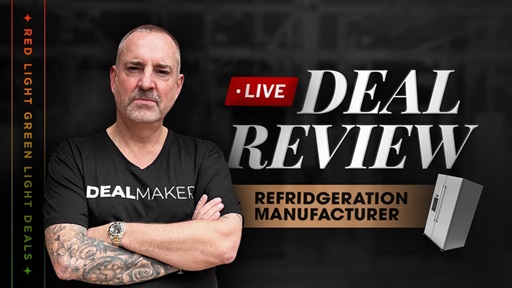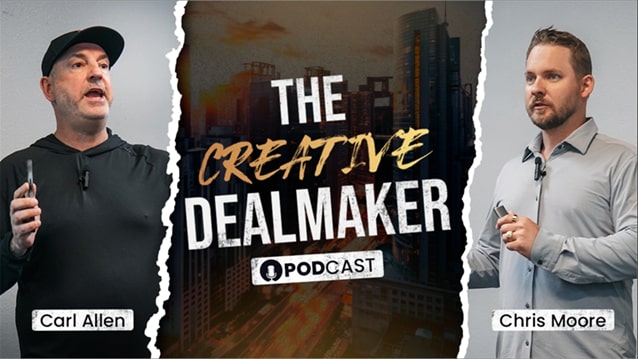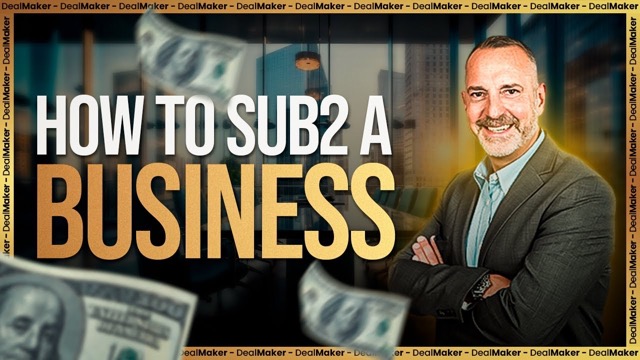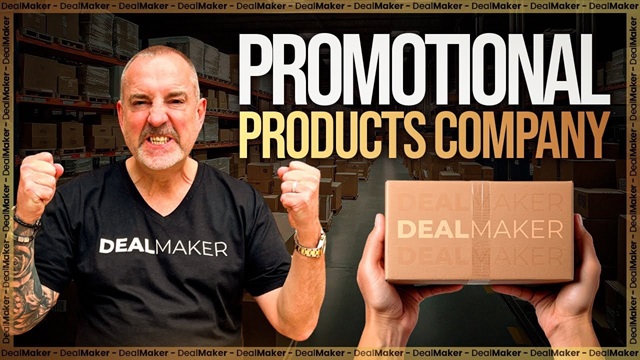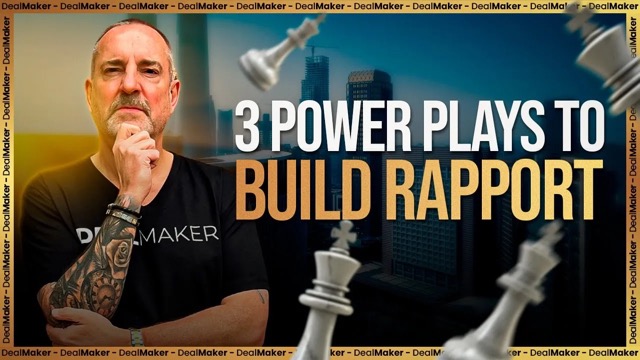Is This $2.5M Software Business a Good Deal? [RLGL Deal Review]
Is This $2.5M Software Business a Good Deal? [RLGL Deal Review]
In this engaging episode, Carl Allen and his team review a potential acquisition opportunity—a $2.5M custom software development company based in Florida. This professional services business specializes in creating bespoke software solutions, primarily catering to public safety organizations, courts, and nonprofit associations. It also boasts three proprietary products, including a back-office mobile application, an association management software solution, and an advanced ATM platform featuring crypto buy/sell functionalities.
With a team of 14 employees and a history of delivering custom software solutions nationwide, this business is on the market due to the owner’s impending retirement. While the company enjoys high gross margins typical of software businesses, its operational structure—focused entirely on U.S.-based talent—leads to significant overhead costs. This episode dives deep into the potential for optimization, including the integration of offshore resources for cost efficiency.
Carl and his team analyze the deal’s strengths and challenges. Key positives include the company’s established client relationships, recurring revenue from maintenance contracts, and unique market positioning. However, the review also highlights concerns such as the reliance on lumpy, project-based revenue, limited differentiation in the competitive custom software market, and the need to replace key personnel exiting the business.
The financials, while promising, warrant further investigation. The adjusted EBITDA and the impact of the departing owners’ salaries on profitability are critical factors to evaluate. Additionally, the team discusses creative financing options, including leveraging SBA loans, seller notes, and a strategic deal structure to enhance the acquisition’s feasibility.
Listeners gain valuable insights into assessing service-based businesses, particularly in the software sector. Topics include the importance of understanding client churn rates, identifying opportunities for operational scalability, and evaluating the sustainability of competitive advantages in a crowded market. Carl also emphasizes the importance of replacing key relationships when owners transition out, as these can significantly impact sales pipelines.
This episode serves as a practical guide for aspiring dealmakers, offering actionable advice on how to navigate the complexities of acquiring and scaling service-oriented companies. Whether you’re a seasoned investor or exploring your first business acquisition, this episode provides a comprehensive framework for evaluating opportunities like this custom software development firm.
Full Transcript:
Morning, guys. Happy Thursday. Good morning. I’m back in Texas. So, looking forward to, the call today.
God, it’s hot. I don’t know where you guys are in the world, but it’s boiling hot, crazy hot here in, here in Texas. They they, when when we moved here back at the end of May, the the temperature was about ninety degrees.
And we were saying, yeah, everyone’s raging about Texas heat. This is nothing. Like, we can deal with this. And, we went back to UK for a week.
As you know, we got back here on Tuesday night. And, UK was nice. It was about seventy five degrees. Nice nice and warm.
Heat wave. It’s been over a hundred since we got here, and it’s literally, like, crazy. And the, one of the air con panels in the upstairs of the house has failed, so it’s literally, like, so freaking hot up there. So no one’s venturing upstairs into the house.
We’re all we’re all living downstairs, which is, which is cool. Alright. Let’s go to, deal number two. Let’s go to Manel Nelson.
Alrighty. Hi, everybody.
Alright. I’m Manel Nelson, and, the business I want to present today is a professional services, custom software development company.
The presentation will be pretty quick, anyways, and then I will go to the one sheet.
So so what is that business is about? You know? Very quick and executive summary of it. This is a broker deal, and there is no asking price.
The is a s corp, and the number of employees about fourteen people, including two managers.
And, the reason for sale is for is retirement.
And I also asked for the buyer scale, and it was no license required, but saw software experience, it’s needed.
It’s a home base even though that country, the owner got an office in Florida.
The location, of course, is in Florida, but is a customer nationwide.
So let so what kind of service that company offer?
It’s not a a placement type of company. It’s mostly a software solution and mainly who primary court, public safety, and nonprofit association.
And they got, five service offer. They do cost, custom development solution, ongoing support and maintenance. They do also CRM, system integration, and website development.
And top of those service offer, they also have, like, three product.
The first product, it’s a back office and mobile application used to assist go to door sales.
The second one, it’s for association who’s, I will say, who’s looking for more affordable type of solution for association management software.
And the last one, it’s a this type of ATM next generation went through check cashing, crypto buy and sell, prepaid cards, mobile top ups, and bill payments.
Yeah. Let’s move on to the next one.
So what what is the team? The the way I see it for the team, I will be even though, I’m mostly looking for a on investor, but I will probably do a one year transition.
This is something which is in my lane. I got twenty years in software development and department, including maintenance. I assume different roles as a project engineer, sales, operation, GM type. So this, I think I can bring a lot of value there.
Even that product is not exactly I’m mostly in in the software. Right? Yeah. Yeah. Yeah.
Yeah. Yeah. The second member will be one honor.
Out of the three, there is one who want to stay and also discuss already salary. He’s looking for one twenty five k to to stay.
Currently, he’s he’s the face of the business with the largest contract. So type of program manager type of work to the big customer.
And, of course, with the two out of three living, I will not mind to have new partners, looking for. And I think the wall, the type of profile would be helpful, and this team will be type of system architecture.
Somebody who can do some and sign sales, project coordination, or larger project. I’m looking to see, you know, see if or you will not stay too long. So try to beef up the team there.
So let’s move on to the one sheet.
Tell me if you guys can see.
Well, even though that there was no no asking price, I think this project with a minimum will go to for two point five million.
From revenue wise, I did have the data for the twenty four even the until June, the revenue was an estimate, so I decide to use it.
So we got an average of revenue about, you know, two point two point five.
From the EBITDA point of view, you can see which EBITDA, there is officer salary, and I’m trying to get some clarification there.
I got a seller meeting tomorrow, but the officer salary over three hundred k. I don’t know if it’s for all of three of them, if there is on top of it some other, salary. So I need to discuss that.
From the from the cash point of view, like, I don’t think there will even any cash in the business, so this will be discussed for with financing of the business.
K. So we can see the multiplier is, you know, is about three, four. And if I move to the okay. Let me just try to the SBA because I think the SBA will be probably the best to go there. So what I was thinking is of a five percent by a query with eighty five percent alone, a seller loan a seller note of ten percent.
And we can see the cover ratio is, like, really, yellow, so will be the top of the, maximum price. That will put an offer about three point three million.
Yeah. Of course, I will wait for feedback to see if that makes sense or not.
Any questions so far?
Yeah.
Let me let me give you some some well, one question I’ve got is Mhmm.
That they have three primary products that are quite diverse.
Mhmm. Are they are they building software then selling it, like, as a SaaS model to end user customers, or are they a developer creating software for other companies who are then going out and selling that to their customers? Which one is it?
I think they develop a custom software, mostly for quotes.
Yeah. But are they developing it and they’re selling it to lots of customers as users, or are they selling it to companies who are then selling that software to customers? Which is it?
That is custom development for each course. It’s not a SaaS model. I think the product they have the three product is they have product is an extra. They do some revenue. They’re not selling to everybody.
But for each customer, they they they can custom depending in the different integration that’s yeah.
Yeah. Okay. So so that they’re an outwork they’re an outsource software development. So, well, presumably, they must have a lot of other projects then.
They do.
Yeah. They must have a lot of other projects. So so so that it it’s bespoke, one time. And then what’s their commercial model?
Are they do they get is is it purely, is it is it fee based work, or do they have any royalties or percentage of revenue on the back end or the software that gets sold through? Or is is it just big, lumpy, projects where a customer calls them and says, hey. Can you build me a crypto program? And they go.
They build it. They get paid, and then that that there’s maybe some maintenance, and further development moving forward. But but, generally, it’s big, chunky project based work. Yeah?
That that the second option. It’s a built it’s a big project. They go forbid.
They got the project, and they deploy the project, get the money for to milestone. Then after the project is done, they are they are the maintenance contract in place, and they can continue to serve the customer. And, obviously, they yeah. That’s what they do.
Yeah. Oh, okay. Yeah. And and it’s based in Florida. And are are all the employees in the US?
Or are They’re all Yeah. Foreign. Correct.
They’re all.
So is there any employees offshore?
They’re not offshore employee. It’s all in US. And that I’m not sure why if it’s because of government contract or not, but I will double check that.
Got it. Okay. Yes. So one of the things that would concern me about this is Mhmm. Competition overseas.
So in places like the Ukraine, other parts of Eastern Europe, India, even parts of Latin America now, there’s there’s a lot lower cost software development companies that Mhmm.
That large companies are are going to. That could be a positive for you in terms of scale, because developers in the United States for this type of work are probably very, very expensive.
That that kind of that came across in the original model that you that you showed.
Big overhead in this business.
Obviously, gross margins in software are very high.
Margins before the add backs in this business were were quite low. So big overhead, which I think reflects expensive, employee costs, the fact that they’ve got all of their, coders in in the United States.
The other thing I would look into deeply, and I think you alluded to it is, a big part of the add back in that was the salaries of the two employee all the two partners that are leaving. I’d be very keen to understand what they do inside of the business. And if they need replacing, they probably do. So those add backs, are probably not all allowable. So I think what you’ll find in this deal is your true adjusted EBITDA is probably lower than than what you were thinking. And Mhmm.
I I think this probably brings the deal down, probably south of two and a half mil. That would make the SBA work a little bit better as well. I I just did it in my head at around the two point four million valuation. I got a cover ratio, just over one point six five.
But but, yeah, I I think that that’s the key thing for me.
I I don’t I don’t like software companies that are big lumpy project based, especially with the the major offshore competition that you’ve got. But, you know, but having said that, I do see a lot of American companies now trying to stay onshore, with their choice of providers. So maybe that’s the differentiation their place in in the market.
I think to scale this, you would probably have to employ some offshore capability because I I I think there is a lack of qualified people that are affordable, or continued production.
And, yeah, I I think just really figure out what the other people are doing that are leaving, because you might find you have to replace them. They might be as expensive as as what they’re taking out of the business already, and that might that might severely impact the add backs, which means that the adjusted EBITDA is probably closer to half a million dollars, which means then that, you know, even at two and a half mil, it’s a five times multiple.
And, yeah, that’s probably not a deal that the SBA would do. So I think come back to us once you’ve, what once you’ve correctly computed what the add backs are. But, yeah. Jeremy, what do you think?
Yeah.
Can Manel, can you go back to the, the red light the the one sheet here real quick? Yeah. Perfect.
Okay.
Yeah. Very good.
Yeah. So with this, you know, a couple questions that I would just have on the numbers. You know, obviously, Carl mentioned the ad backs. I would I would look at that.
Those are those are pretty big, but they’ve had a a a pretty significant drop in in terms of what their their actual margins are.
So if you look at their adjusted EBITDA margin as well as their gross margin, they they continue to to go down.
So, you know, to to Carl’s point of, you know, looking offshore and being able to to scale Alright.
Yeah. I’ll I’ll come out in a minute then.
You know, is what does that look like, and and why are those those margins dropped? So that would be, you know, in addition to what Carl said, those would be my my biggest questions. Overhead’s going up. Your gross margin’s going down.
So so what’s going on with that?
K. Thank you.
Well, for for the for the offshore, from my experience in the US market, usually, you can do the development offshore, but some of the integration, you know, on-site, especially these governments that they probably will not want to have offshore resources. So you will need some of the local, especially the the face to to the customer type, and you can complete that with some development offshore.
Yep. Yeah. Very good.
Yep. Okay. Anybody else got any thoughts, questions about the Steel AS?
Yeah, man. I was just looking to I would just do a double, click on their sales cycle. A lot of these services companies are very commoditized and undifferentiated.
The one risk I would have is that a lot of times the way these guys sell is they have word-of-mouth, And it’s the relationships that the senior people in the company have with clients.
So I would look at their churn rate of customers. I would look at the success rate on projects, and then I would look at how are you gonna replace those relationships if those people leave because that’s primarily where their sales come from is word-of-mouth. Because there’s nothing differentiated about, like, to Carl’s point. There’s just so many of these custom companies out there that do this. So how do you differentiate yourself over others?
Do they have any specific technology skills? Like, do they have channel partners?
So I would look into the the sales. The sales bottleneck is the biggest issue with software services companies.
Yeah. I think you’re right there because they mentioned they don’t really have sales activities beside of reference, you know, from all customer and the relationship they have.
Yeah.
Okay. So, clearly, this deal is in your lane. I think this could be a good deal for the right price and the right structure, but the the I’ll reiterate the absolute number one thing for me is, like, what’s the true adjusted EBITDA? What’s it gonna cost to replace the people that that are leaving? And can you do this deal, creatively? I I I think south of two and a half, I think the SBA would probably do this deal that they do like technology deals.
You go back five years, would have been impossible to do a deal like this with the SBA, but because they keep changing the roles that they, they’re loving pure cash flow deals now.
But, yeah, def definitely some things to look into, on this for sure. Any more questions on this?
No? I think that’s it. Well, well, great presentation, Manel. Good job.
Definitely go forward.
